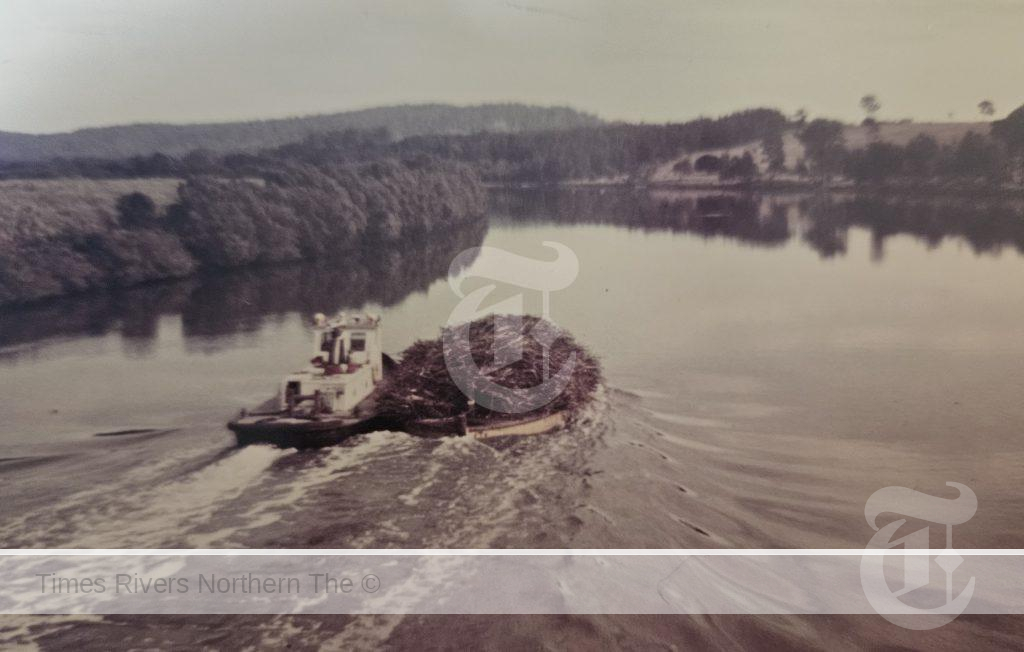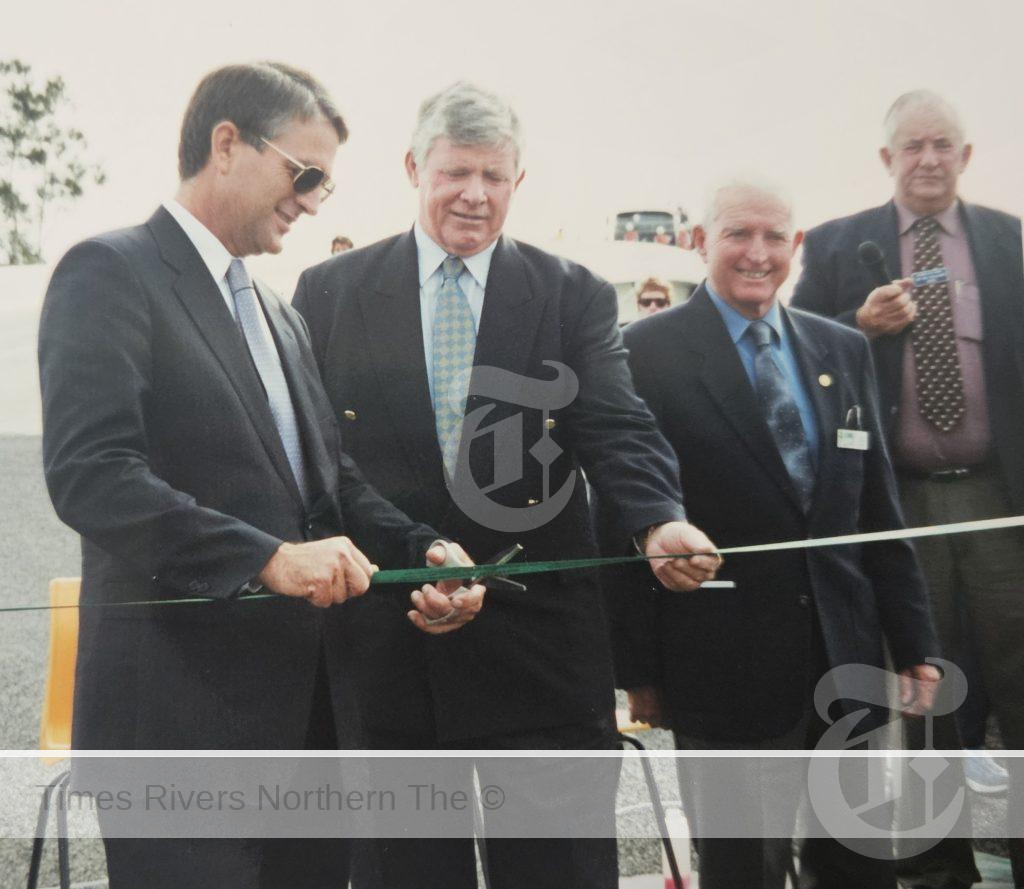Training for our silver anniversary
By Samantha Elley
With a 25th wedding anniversary to celebrate and the idea that we wanted to do something different, hubby and I decided to explore a recently untouched area in our travel experiences.
We were heading to Perth.
Not by anything as pedestrian as flying over there. Oh no, we wanted to go by train.
Journey Beyond is a company that runs overland train trips, one of which is the Indian Pacific.
The name makes sense, as the trip goes from ocean to ocean, although we were going Pacific to Indian.
After checking in at Central Station, hubby meeting our first new co-traveller by dropping his bag on the poor guy’s leg, we were ushered into the Eternity Café for canapes and welcome drinks while serenaded to the tunes of Indian Pacific musician Mike Elrington. We would meet him again throughout the three day journey.
Once fed and watered, the very friendly and helpful staff showed us to our cabins.
We were booked in Gold service which meant two bunk beds and our own private shower and toilet.
Other classes on the trip include Gold single, which comes with one bunk and shared toilet facilities or Platinum, a cut above with double beds, full sized ensuites and expansive viewing windows.
If you suffer from claustrophobia, be prepared.
The rooms are not large and the ensuite in gold class was an engineering feat to have a shower in such a tiny space without saturating towels, toilet and toothpaste.
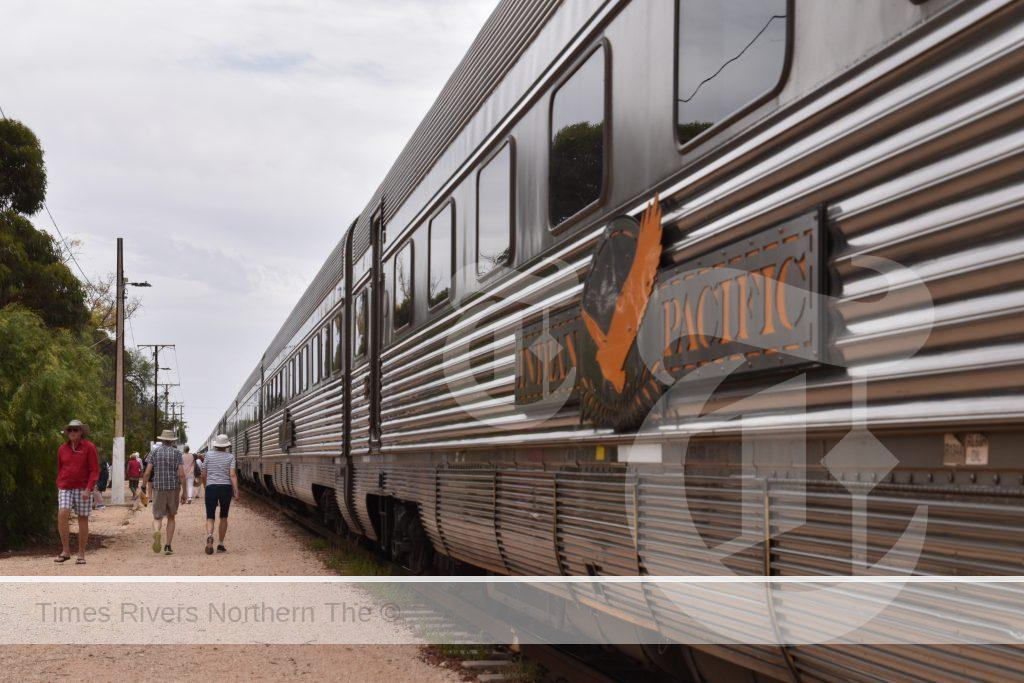
Stopover in the ghost town Cook
We explored the lounge and dining cars and slowly got to meet the people we would be sharing our epic train journey with over the next three days.
There were travellers from England, Canada, Sweden and the USA.
There were even locals who had decided to explore more of their country and a couple who were heading home to the western capital after travelling on the east coast.
The first evening saw us depart Sydney via the western suburbs on to the Blue Mountains.
As we curled up into our bunk beds for the first night, full from the three course meal enjoyed in the dining car, we prepared to fall asleep to the rocking of the train.
The next morning saw us all comparing our lack of sleep, due to the rocking of the train. That would soon change on the second night.
A normal exploration of Broken Hill in the early morning was sadly cancelled due to the unfortunate hold up by a freight train, but we were to be entertained onboard by the musical abilities of Mike from the Eternity Café and a very gifted musical passenger who accompanied him on flute.
The entertainment continued with an unusual form in the shape of Broken Hill’s iconic drag queen Shelita Buffet, who took a liking to hubby, wanting to glitter up his beard.
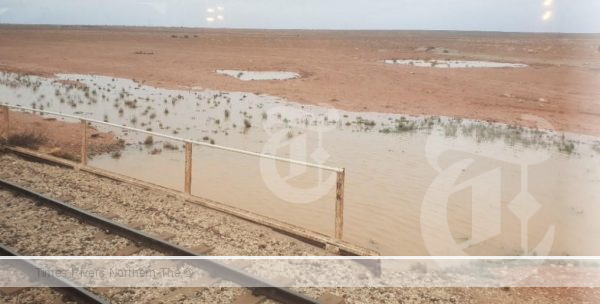
Flooding on the Nullabor
Shelita did a fast rendition of Bingo which Yours Truly ended up winning. Despite a promise of a meal with Shelita, I ended up with a tote bag. I think it had been hoped hubby would win, rather than me.
The evening was an off board experience where we chose to dine at the South Australia Museum, after a fascinating talk about the early life and fossils located in South Australia and from the Nullabor.
Back on board, we heard of the experiences of others who had gone to the Barossa for wine tasting, the night markets or to the little village of Hahndorf to taste the gin and cheese.
We were all exhausted and next morning woke up to the expansive, yet fascinating views of the Nullabor, which broken down is nullus = nothing and arbor = tree, meaning place of no trees.
That’s not entirely true, as we did see trees and scrub and an amazing orange earth contrasted against the azure blue sky.
It is the world’s largest single exposure of limestone bedrock and occupies an area of about 200,000 square kilometres. At its widest point, it stretches about 1,100 kilometres from east to west across the border between South Australia and Western Australia.*
There is something, dare I say, spiritual about crossing such a large expanse of flat land that is normally dry.
What we saw, however, were large pools of rainwater.
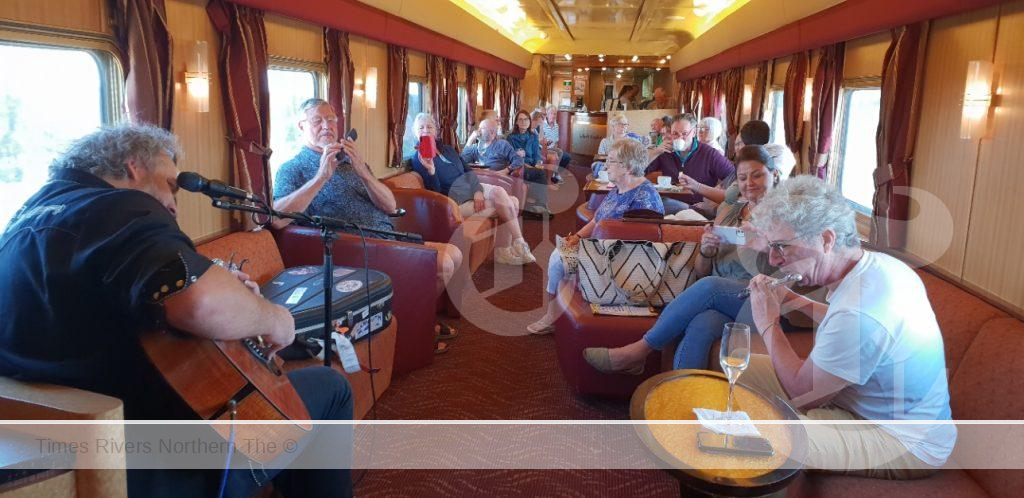
Musical entertainment in the lounge car
Apparently, the staff told us they had never seen the Nullarbor with so much water.
It also meant we did not stop at Rawlinna sheep station for our promised under the stars barbeque for Australia Day.
We did, however, enjoy a lamb roast on board with a chocolate pudding chaser.
We did get to visit the ghost town of Cook, which was a chance to stretch our legs.
Cook was established in 1917 when the Trans-Australian Railway was built.
When the town was a major Commonwealth Railways centre for track maintenance and locomotive and rolling stock repairs, it supported a school and hospital.
At that time, railway employees and their families depended on two weekly provisions trains for the delivery of supplies.
The town was officially closed in 1997 and in 2009 claimed a population of four.*
Our final day on the train was spent chatting and laughing with our newfound friends, watching the landscape change to Western Australian bushland and swathes of wheat fields, dotted with large silos and finally into the outer suburbs of Perth, before we disembarked at the East Perth terminal.
To find out more about the Indian Pacific, or Journey Beyond’s other train trips, visit here.
For more travel news, click here.
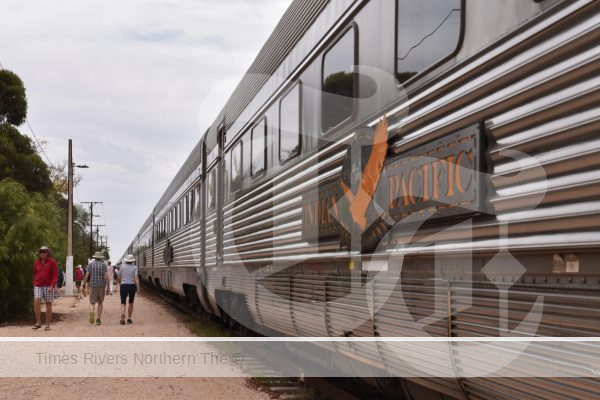




 Tweed Shire News2 years ago
Tweed Shire News2 years ago
 Motoring News1 year ago
Motoring News1 year ago
 COVID-19 Northern Rivers News3 years ago
COVID-19 Northern Rivers News3 years ago
 COVID-19 Northern Rivers News3 years ago
COVID-19 Northern Rivers News3 years ago
 Northern Rivers Local News3 years ago
Northern Rivers Local News3 years ago
 Health News3 years ago
Health News3 years ago
 COVID-19 Northern Rivers News3 years ago
COVID-19 Northern Rivers News3 years ago
 NSW Breaking News3 years ago
NSW Breaking News3 years ago





















